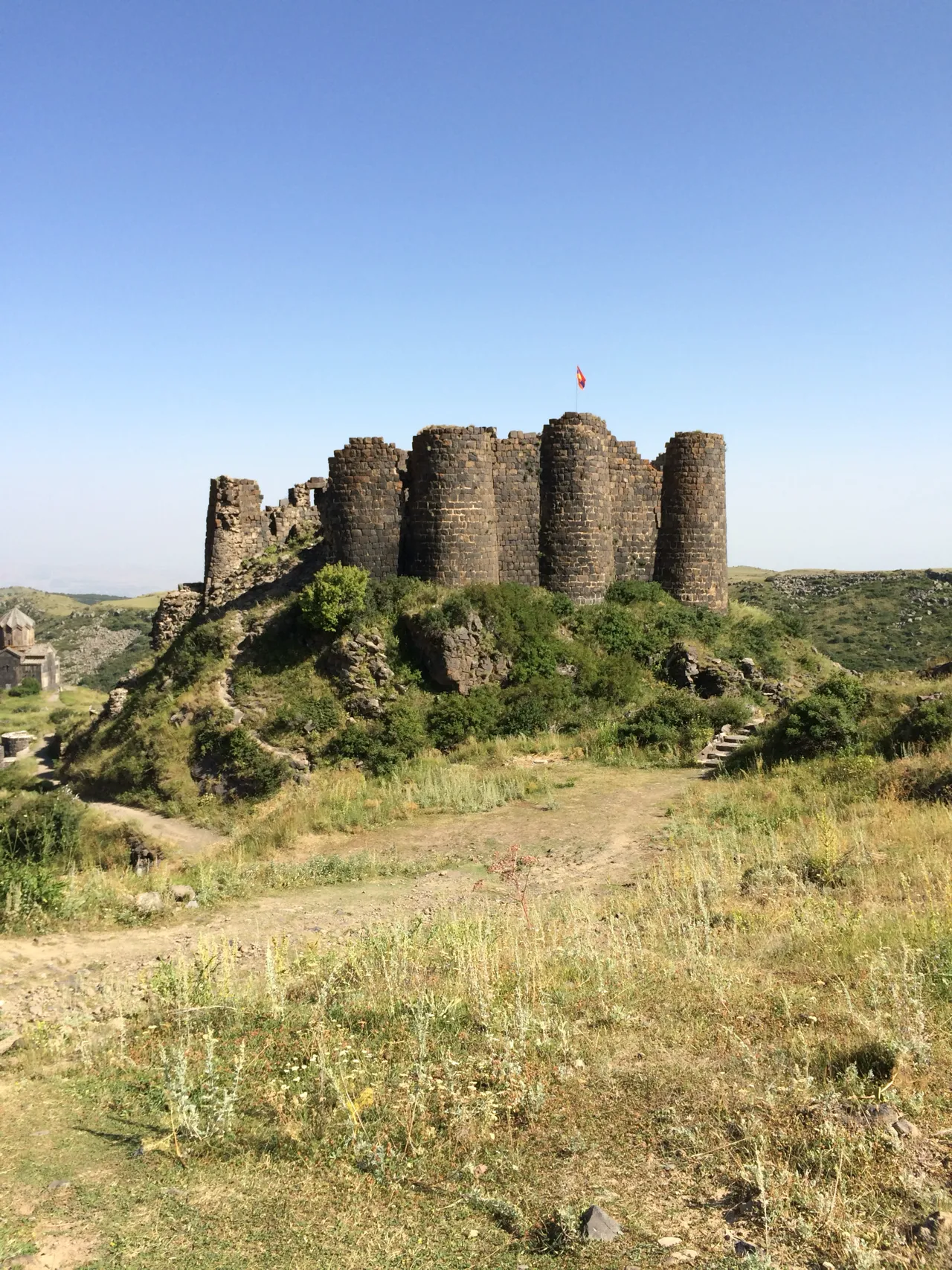Amberd: Fortress in the Clouds
Amberd, meaning “fortress in the clouds” in Armenian, is a 10th-century stronghold situated 2,300 meters above sea level. It lies on the slopes of Mount Aragats, at the confluence of the Arkashen and Amberd rivers in Armenia’s Aragatsotn province. Despite its name being mistakenly attributed to the nearby Vahramashen Church, Amberd is a fortress of significant historical importance.
Get your dose of History via Email
Recent Recognition and Threats
In 2024, Europa Nostra, a pan-European federation for cultural heritage, listed Amberd as one of the seven most endangered European monuments. The fortress faces potential collapse due to age, lack of funding for restoration, erosion, and earthquakes.

Historical Background
Early Beginnings
Amberd’s history dates back to the Stone Age. During the Bronze Age and Urartian periods, a fortress existed here, though it is now obsolete. Some sources suggest Amberd served as a summer residence for kings. The noble House of Kamsarakan built the castle and parts of its walls in the 7th century.
The Pahlavuni Era
Four centuries later, the House of Pahlavuni purchased and rebuilt the fortress. Prince Vahram Pahlavouni added the Church of Surb Astvatsatsin in 1026, fortified the complex with thicker stone walls, and added three bastions. Unusually for a military site, a bathhouse was also constructed and remains moderately intact.
The Zakarian Period and Mongol Invasion
Under Zakarian control in the 12th and 13th centuries, Amberd’s walls were reinforced and the castle renovated. In 1215, nobleman Vache I Vachutian bought Amberd, making it a key defensive site. However, in 1236, the Mongols captured and destroyed the fortress. It remained abandoned until the 20th century when reconstruction and archaeological excavations began.

Architectural Marvels
Fortress Structure
Amberd’s castle ruins cover an area of 1,500 square meters. The walls, constructed of roughly hewn basalt blocks, are inclined for better defense. The interior of the three-story castle features lavishly decorated rooms with carved decorations, oil lamps, incense holders, and walls adorned with silks and brocades.
Water Supply System
A reliable water supply was crucial for Amberd’s inhabitants. A primary viaduct, a terra cotta pipeline, stretched 4 to 5 kilometers from the fortress to reservoirs collecting spring water and melting snow. In case of attack, a secret water supply ensured a constant flow of water. A covered passageway led from the fortifications down to the Arkashen River.
Bath House
The bathhouse, built between the 10th and 11th centuries, features twin bathing rooms with domes and hypocaust heating, a system originating in Roman times. This heating method involved hot air circulating through pipes under the floors and walls.

Notable Historical Events
900-920 AD
During the Arab invasions, the nearby town of Byurakan was devastated, yet Amberd was not mentioned by historians until around 1000 AD.
900-1100 AD
Ashot II Yerkat began liberating the country from Arab control, restoring old fortresses and building new ones, including Amberd.
1020-1026 AD
Gagik I Bagratuni divided his kingdom among his sons, with Hovhannes-Smbat receiving Amberd. In 1026, the Pahlavuni family took control of Amberd, enhancing its defenses.
1040-1050 AD
Vahram Pahlavouni fortified the fortress, and it remained in his family until the Byzantine Empire took over in 1045. The fortress saw significant military action during this period.
1064 AD
The Seljuk king Alp Arslan partially destroyed Amberd during his invasion of Armenia.
1196-1215 AD
The Zakarian family liberated and restored Amberd, making it a stronghold against the Seljuks. In 1215, Vache I Vachutian purchased Amberd, fortifying it further.
1236 AD
The Mongols captured and nearly demolished Amberd. The fortress remained in ruins until the 20th century.

Archaeological Excavations
Early Excavations
In 1936, experts from the Hermitage Museum and the Academy of Sciences of Soviet Armenia began excavations, discovering the baths, secret passage, and main entrance.
1960s Discoveries
Excavations in the 1960s revealed the fortress’s upper parts, homes, workshops, and sections of walls from the Bagratuni and Zakarian periods. Notable discoveries included the northern part of the church and plastered buildings.
Conclusion
Amberd stands as a symbol of Armenia’s rich history and architectural ingenuity. Despite facing numerous threats, efforts to preserve and study this fortress continue, ensuring its legacy endures for future generations.
Sources:

